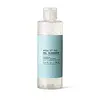What's inside
What's inside
 Key Ingredients
Key Ingredients

 Benefits
Benefits

 Concerns
Concerns

No concerns
 Ingredients Side-by-side
Ingredients Side-by-side

Water
Skin ConditioningCocamidopropyl Betaine
CleansingSodium C14-16 Olefin Sulfonate
CleansingPalmitic Acid
EmollientHydroxypropyl Starch Phosphate
Glycerin
HumectantStearic Acid
CleansingVitis Vinifera Seed Oil
EmollientSodium Hydroxide
BufferingPhenoxyethanol
PreservativeCaprylyl Glycol
EmollientSodium Sulfate
C10-16 Olefin
Sodium Chloride
MaskingTocopheryl Acetate
AntioxidantLeuconostoc/Radish Root Ferment Filtrate
AntimicrobialHyaluronic Acid
HumectantHibiscus Sabdariffa Flower Extract
Skin ConditioningYeast Extract
Skin ConditioningPapain
Skin ConditioningSoy Amino Acids
Skin Conditioning1,2-Hexanediol
Skin ConditioningCarbomer
Emulsion StabilisingPotassium Sorbate
PreservativeSodium Benzoate
MaskingAlgin
MaskingWater, Cocamidopropyl Betaine, Sodium C14-16 Olefin Sulfonate, Palmitic Acid, Hydroxypropyl Starch Phosphate, Glycerin, Stearic Acid, Vitis Vinifera Seed Oil, Sodium Hydroxide, Phenoxyethanol, Caprylyl Glycol, Sodium Sulfate, C10-16 Olefin, Sodium Chloride, Tocopheryl Acetate, Leuconostoc/Radish Root Ferment Filtrate, Hyaluronic Acid, Hibiscus Sabdariffa Flower Extract, Yeast Extract, Papain, Soy Amino Acids, 1,2-Hexanediol, Carbomer, Potassium Sorbate, Sodium Benzoate, Algin
Water
Skin ConditioningCoco-Glucoside
CleansingSodium Lauroyl Sarcosinate
CleansingXanthan Gum
EmulsifyingCeramide AP
Skin ConditioningCeramide NP
Skin ConditioningCeramide Ns
Skin ConditioningCeramide EOP
Skin ConditioningRosa Centifolia Flower Water
Skin ConditioningTocopherol
AntioxidantSodium Cocoyl Apple Amino Acids
Skin ConditioningFucus Vesiculosus Extract
EmollientSodium Benzoate
MaskingCitric Acid
BufferingCeteareth-25
CleansingCetyl Alcohol
EmollientBehenic Acid
CleansingCholesterol
EmollientCaprooyl Phytosphingosine
Skin ConditioningCaprooyl Sphingosine
Skin ConditioningHexylene Glycol
EmulsifyingTetrasodium Glutamate Diacetate
Potassium Sorbate
PreservativeEthylhexylglycerin
Skin ConditioningPhenoxyethanol
PreservativeAscorbyl Palmitate
AntioxidantWater, Coco-Glucoside, Sodium Lauroyl Sarcosinate, Xanthan Gum, Ceramide AP, Ceramide NP, Ceramide Ns, Ceramide EOP, Rosa Centifolia Flower Water, Tocopherol, Sodium Cocoyl Apple Amino Acids, Fucus Vesiculosus Extract, Sodium Benzoate, Citric Acid, Ceteareth-25, Cetyl Alcohol, Behenic Acid, Cholesterol, Caprooyl Phytosphingosine, Caprooyl Sphingosine, Hexylene Glycol, Tetrasodium Glutamate Diacetate, Potassium Sorbate, Ethylhexylglycerin, Phenoxyethanol, Ascorbyl Palmitate
Ingredients Explained
These ingredients are found in both products.
Ingredients higher up in an ingredient list are typically present in a larger amount.
Phenoxyethanol is a preservative that has germicide, antimicrobial, and aromatic properties. Studies show that phenoxyethanol can prevent microbial growth. By itself, it has a scent that is similar to that of a rose.
It's often used in formulations along with Caprylyl Glycol to preserve the shelf life of products.
Potassium Sorbate is a preservative used to prevent yeast and mold in products. It is commonly found in both cosmetic and food products.
This ingredient comes from potassium salt derived from sorbic acid. Sorbic acid is a natural antibiotic and effective against fungus.
Both potassium sorbate and sorbic acid can be found in baked goods, cheeses, dried meats, dried fruit, ice cream, pickles, wine, yogurt, and more.
You'll often find this ingredient used with other preservatives.
Learn more about Potassium SorbateSodium Benzoate is a preservative. It's used in both cosmetic and food products to inhibit the growth of mold and bacteria. It is typically produced synthetically.
Both the US FDA and EU Health Committee have approved the use of sodium benzoate. In the US, levels of 0.1% (of the total product) are allowed.
Sodium benzoate works as a preservative by inhibiting the growth of bacteria inside of cells. It prevents the cell from fermenting a type of sugar using an enzyme called phosphofructokinase.
It is the salt of benzoic acid. Foods containing sodium benzoate include soda, salad dressings, condiments, fruit juices, wines, and snack foods.
Studies for using ascorbic acid and sodium benzoate in cosmetics are lacking, especially in skincare routines with multiple steps.
We always recommend speaking with a professional, such as a dermatologist, if you have any concerns.
Learn more about Sodium BenzoateWater. It's the most common cosmetic ingredient of all. You'll usually see it at the top of ingredient lists, meaning that it makes up the largest part of the product.
So why is it so popular? Water most often acts as a solvent - this means that it helps dissolve other ingredients into the formulation.
You'll also recognize water as that liquid we all need to stay alive. If you see this, drink a glass of water. Stay hydrated!
Learn more about Water